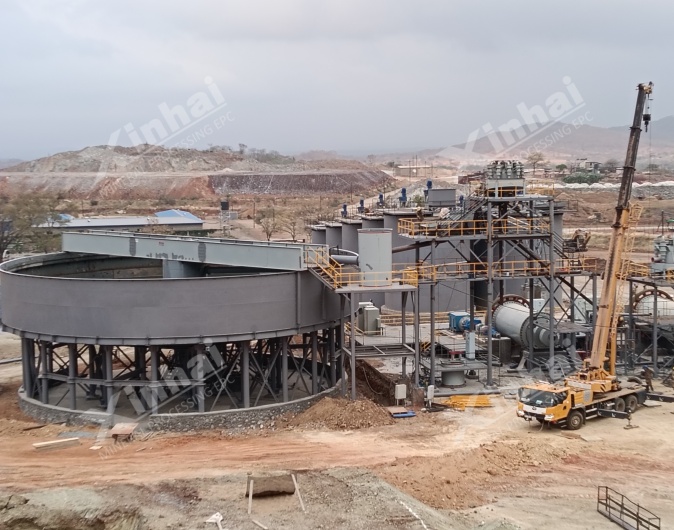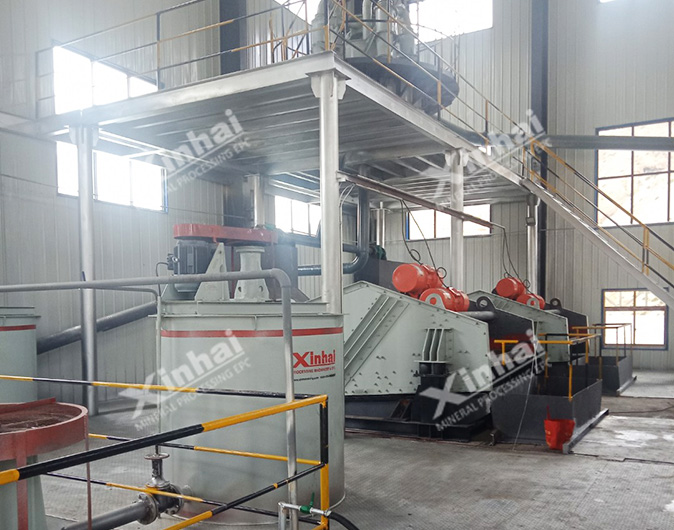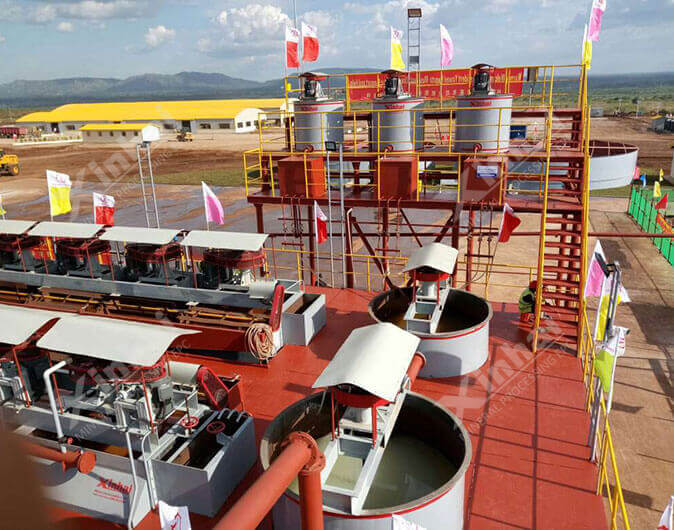
In 2024, Xinhai Mining successfully undertook and implemented the 1000t/d gold processing plant project in Zimbabwe. This project not only demonstrated our professional capabilities in the mineral processing field but also provided the client with an efficient and economical solution through optimized design and technological innovation....

The tailings processing capacity of this project was 1500t/d, and the average tailing concentration was 28%....

The ore had a simple composition, primarily comprising fluorite, quartz and calcite. Major chemical components were CaF2 (28.30-87.49%, an average of 58.19%) and SiO2 (8.18-65.38%, particularly 25-38%, an average of 34.11%). The relationship between CaF2 and SiO2 was negative, which accounted for 92-95% of the total....

Major minerals were potassium feldspar and albite, which accounted for 60-80%. In white-flesh pink color, potassium feldspar occurred in the form of subhedral plate. Some crystals had cross-hatched twinning. The secondary mineral was quartz accounting for 10-30%, which was in milk white color and occurred in irregular and wormlike form. There was a minor amount of black mica, which occurred in the form of black flake and accounted for 1-5%. White mica occurred in the form of white flake and accounted for 1-5%. Magnetite and tourmaline occurred locally in black plate form....

The Vietnam 800t/d graphite mineral processing plant was an EPC+M+O project. The major mineral was graphite granulite, while the second one was graphite schist. The major beneficial mineral was medium flaky graphite which had a much better ability of beneficiation....

The ore consisted of iron, phosphorus and other metallic elements as well as loose igneous carbonatite weathering residue and hypergenesis-based crandallite and argillaceous hematite clay. The existence of huge slime caused difficulty in the separation and purification of apatite and magnetite. All minerals were inter-wrapped and associated so that liberalization was difficult. The isomorphism was dominant as titanium, iron, manganese, aluminum and magnesium lattices replaced each other. As a result, the ore composition was much complicated....